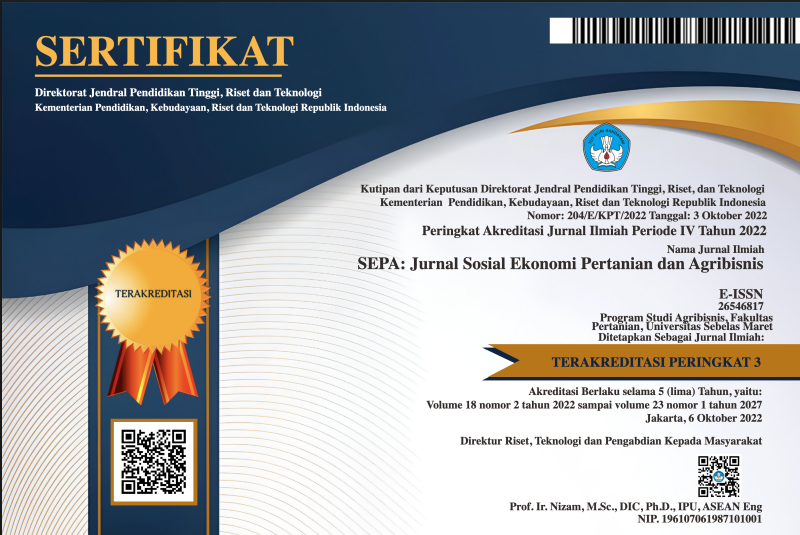ANALISIS EKONOMI DAN PROSPEK USAHA TANAMAN DAN TERNAK SAPI DI LAHAN PERKEBUNAN KELAPA
Abstract
This paper studies the results of the 2012 field survey research area targeted is the location of plantations owned by farmers in the village of Coventry District Leuwi Booths Bogor Regency of West Java, to get a general idea on the land through a pattern of oil palm plantations and the business of cattle through research studies with application of livestock on land that has not produced oil crops (TBM), coconut trees that produce (TM) and coconut trees that do not produce or damaged (TTM / TR) conservation-minded, analissi financial economics. Financial analysis methods is used to determine income from coconut plantations and cattle business. Primary data were obtained directly from the farmers, the secondary data obtained from the relevant authorities and research results. Primary and secondary data collected are tabulated qualitative and quantitative analysis as well as the tables. The results of the financial analysis of the plant economically immature coconut (TBM) gains from the coconut around Rp-3.780.000/tahun/ha because immature coconuts, which means the cost is still in pemeliharana coconut plants, of cattle around Rp5.143.000 / year, whereas immature (TBM) benefits of coconut around Rp6.750.000 / year / ha of cattle around Rp1.972.000/tahun and plants do not produce or damaged plants (TTM / TR) gains from the coconut around Rp1.200.000 of livestock around Rp4.950.000/tahun. It means that utilization of vacant land in coconut plantations damaged by cattle in financial analysis and profitable livestock farmers can maintain the existence of livestock.
Keywords
economic analysis; coconut; food crops; livestock
Full Text:
PDFDOI: https://doi.org/10.20961/sepa.v10i1.14118
Refbacks
- There are currently no refbacks.
This work is licensed under a Creative Commons Attribution 4.0 International License.



.png)







.png)
3.png)





